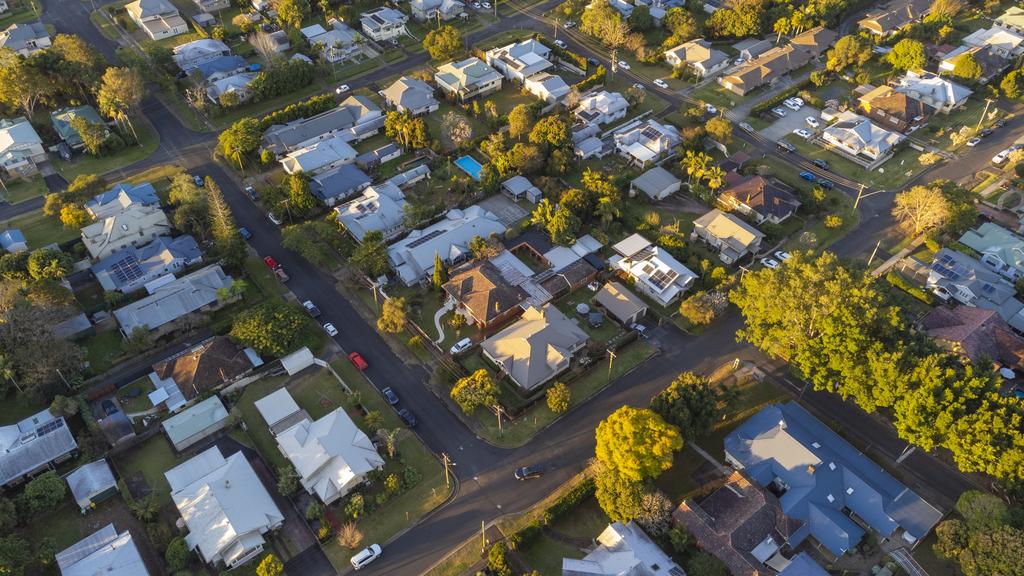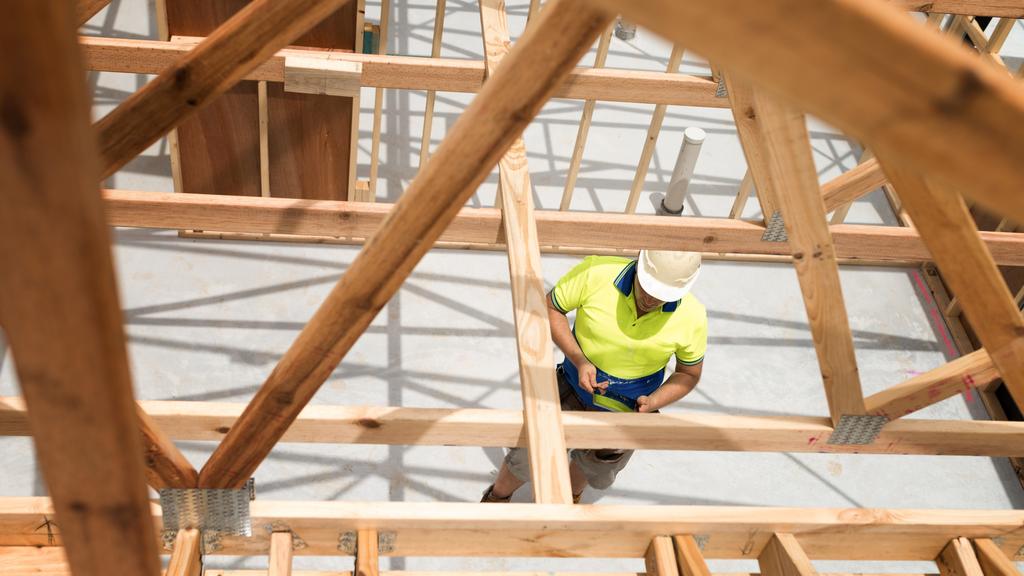The housing revolution that could change gen Z’s gloomy outlook

Despite what they may think, the world is not all doom and gloom for generation Z.
If you talk to generation Z (born 2000–17) you will feel pretty gloomy afterwards. Climate change is going to kill us all, species are going extinct, unjust wars wherever you look, work is meaningless, God is dead, and housing will forever be unaffordable. So much for pleasant small talk.
Data backs up the perception of gen Z as the most pessimistic and misanthropic generation. The share of young people on antidepressants is higher than ever and grows at four times the rate of the national average. The 2021 Census asked for the first time about chronic health conditions and one in four Australian women aged 21 said they had a medically diagnosed chronic mental health condition.
Gen Z are of course the children of Gen X (born 1964-81) and are the first generation to have had access to smartphones throughout their formative years (roughly early teenage years to early 20s). This changed their outlook on life forever. They consume global news all day long. As news is geared toward the negative (“if it bleeds it leads”) gen Z more than older generations took these negative stories to mean the world has gotten worse.
One negative perception that is true, regards housing affordability, but once we look deep into the demographic crystal ball, gen Z has all the reason to become a bit more optimistic.
Today the oldest among generation Z are 24. Family formation for generation Z should begin at scale about age 34. We have reason to believe that housing will be more affordable in 10 years when gen Z needs family-sized homes. What will the housing market for first-home buyers look like in 2034?
Housing affordability is measured in income multiples. How many median incomes does it take to buy a median house? That ratio constantly went up over the last 40 years. A house is now about twice as expensive than in the 1980s.
To make housing more affordable, either incomes must go up or house prices must go down – ideally for gen Z both factors will move in a favourable direction for them.
The big shift could come in the earning potential of gen Z. Unemployment is low and demographics guarantee that the current skills shortage will remain, even if we were to further increase migration intake. We just keep losing workers. The youngest member of the huge baby boomer cohort will be of retirement age in five years.
At that time, the workforce loses a huge generation to retirement while the biggest generation (millennials) continue to have babies for the coming 12 years or so. Large-scale parental leave will, at least temporarily, remove workers from the system.

Housing stock held by baby boomers will come onto the market in the 2030s and 2040s, most of which is in middle suburbs of Australia’s cities.
This means gen Z enters the workforce at a rather opportune time. Leverage is on their side. Gen Z earns relatively high starting wages. These higher wages are the baseline from which future pay increases will be negotiated. We aren’t blindly going to shower gen Z in money, but they will out-earn previous generations.
One part of the housing affordability challenge, incomes, gives gen Z a small reason to be optimistic about their future.
Without wanting to sound too morbid, gen Z will benefit from the death of baby boomers (born 1946–63). The oldest baby boomer will be 88 by 2034. The number of baby boomers dying increases every year, before reaching a crescendo in 2041, and stays elevated throughout the 2040s. Throughout the 2030s and 2040s the entire housing stock occupied by baby boomers will then enter the market. These homes are overwhelmingly located in the middle suburbs of our largest cities.
Some old baby boomer homes will be purchased by relatively rich families, but most homes will be bulldozed to make room for townhouses, at which time more supply will enter the market, and the middle suburbs are finally densified to drive prices down slightly. These homes will be too expensive for most gen Zs, but they will be attractive upgrader homes for millennial (born 1982–99) families who moved to the urban fringe throughout the 2020s and seek out more attractive suburbs. Gen Zs will move into the old millennial homes.
Rental shift
So far, our national rental stock is in the hand of over two million mum-and-dad-type landlords. The recent introduction of build-to-rent schemes aims to bring institutional money into our housing market. There is plenty of institutional money that chases investments like real estate as their client base ages rapidly and looks to de-risk their portfolios. In a decade, Australia will have increased its build-to-rent stock significantly. This will put downward pressure on rents.
As a very deliberate side effect, slowly shifting the national rental stock away from small- scale private investors to large institutional investors makes the introduction of policy driving down house prices more politically feasible.
First, we will see the end of one of our dumbest housing policies. First homebuyer grants are doing the exact opposite of what they claim to do. They always drove house prices up. Not a single economist in the nation would be willing to argue the opposite.
We give a few ten thousand dollars to a small number of people to get onto the property ladder and then hope that the market doesn’t notice and adjusts house prices upwards. It’s a criminal waste of public funds.
The only policy dumber than that is to allow people to use their super savings to be spent on a house, this way we are driving up house prices while wasting our own money. These grants will have been phased out by the time gen Z buys their first home.
Franking credits and negative gearing will have been reformed in about a decade but not fully abolished. The underlying idea will be to channel more property investment into new builds.
Now to the big one. Eventually, we will see the end of stamp duty and the introduction of a land tax. Such a tax reform will be part of a larger transformation that is already being pushed by young policy writers. The goal is to tax wealth rather than income and consumption.
As long as the vast majority, just under two-thirds, of Australians live in a home they own, it is politically difficult to significantly push down house prices. Lucky for gen Z, in about 15 years, the share of homeowners will be so low that such reforms are a no-brainer for politicians.

Simon Kuestenmacher predicts changes will be made to the education sector, such as making TAFE free, to encourage more young people to take up trades.
Smart politicians will ensure that income and consumption taxes will be significantly lowered while progressive taxes on wealth get introduced. Such reforms fit the Australian egalitarian mindset and will be part of a broader campaign to re-establish a sizeable middle-class.
But who will build all these new homes? We established earlier that the current skills shortage will stubbornly persist. Reforms of our migration system will lead to a slightly higher intake of construction-related workers. Not a big win but better than the status quo.
Most importantly, we will make TAFE universally free to encourage more young Australians into the trades. Currently almost half of a year 12 cohort is going to university. That is too high. Our simplistic economic model doesn’t need that many academics. We only export four things: raw commodities (mining), raw agricultural produce, international education, and tourism.
The educational system will slowly be altered to ensure we create slightly more tradies and slightly fewer academics. That will drive tradie wages down, making housing more affordable for gen Z.
By 2034, modern building techniques will also be prominent. Manufactured and prefabricated homes can utilise robots and increase the output significantly. At this stage, I would be surprised if the physical home becomes more rather than less expensive to build.
To add one more highly speculative forecast, in 10 years we might have a public housing developer who actively drives up the share of public house from currently about three per cent to say 10 per cent. Such a change would make housing an even smaller headache for gen Z.
Despite their currently very pessimistic view of housing, I expect gen Z will enter a housing market in the 2030s that is more affordable than it is today. Maybe, just maybe, this look into the future will make gen Z a bit less gloomy.
Simon Kuestenmacher is co-founder and director of research of The Demographics Group







